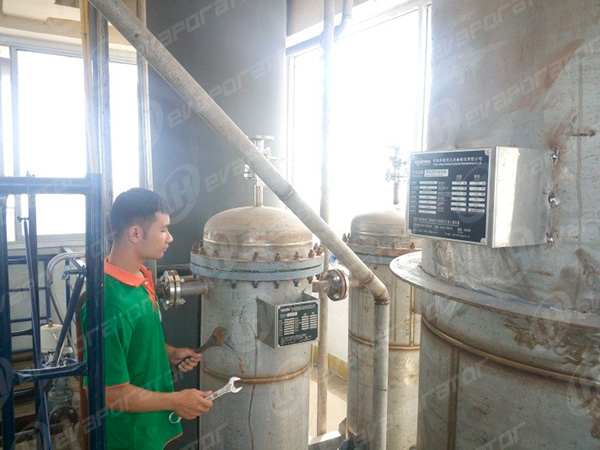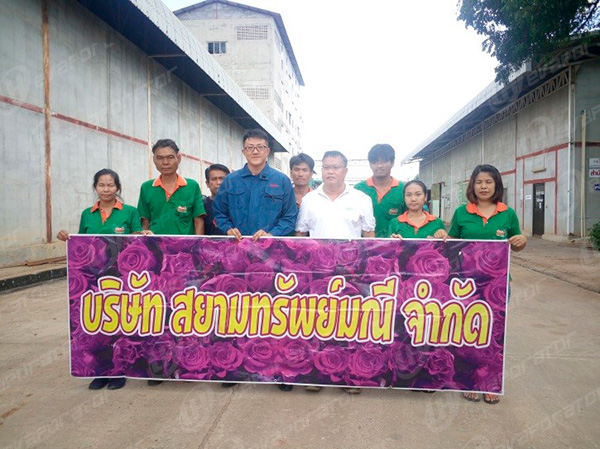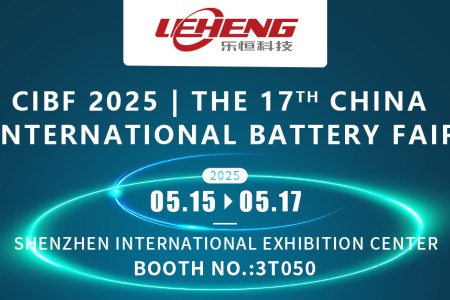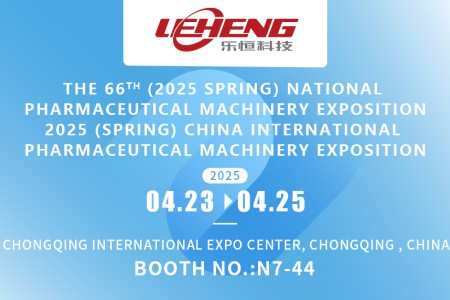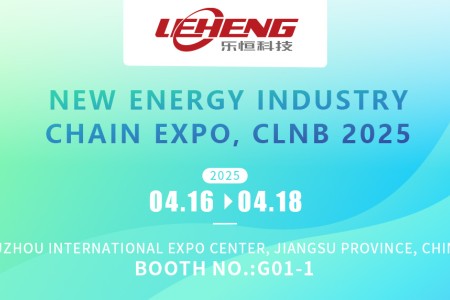There are different ways to produce salt. The brine can be from sea brine, lake brine or wells brine. We have one client from Thailand with brine wells to produce salt by traditional evaporation system. In order to lower down the energy consumption, improve the economic performance, the client required MVR Evaporator system which can cut down over 50%~70% fresh steam consumption by using electricity. We provide corresponding re-construction solution to meet their requirement.
Last month, our engineer spent about two weeks there to help the installation and commissioning of MVR evaporator system. The MVR evaporator with centrifugal steam compressor is working well as expected by client.
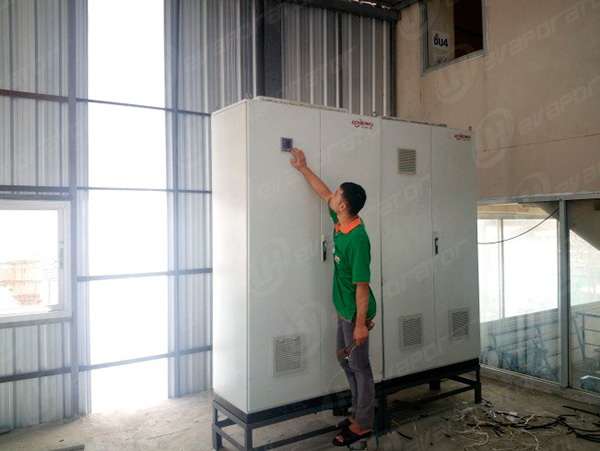
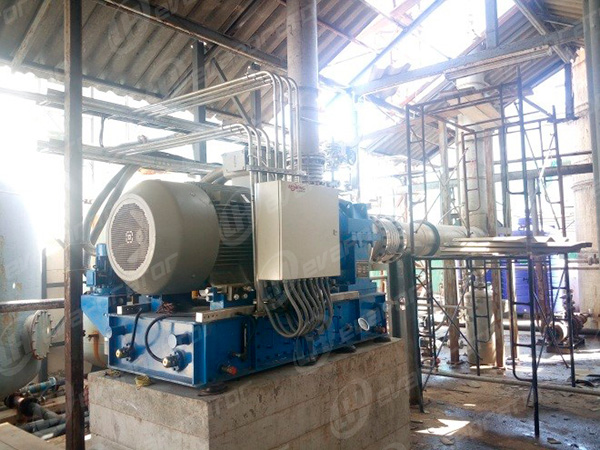
Evaporator is the core equipment for vacuum salt making system. The production capacity, washing cycle, steam consumption and power consumption of the evaporator are related to the crystallization process, therefore, some foreign companies call Salt Evaporator as evaporative crystallizer. Some important key problems and solutions in the design of salt making evaporator as follows:
Prolong the period of washing cycle
After a period of time operation, the salt block on the inner wall of evaporator may fall off to some heating tubes; this will lead to reduce the liquid velocity in the tubes, inner wall temperature of tubes close to the heating steam temperature and caused liquid boiling and salt crystallization.
In China, the washing cycle of salt evaporators is usually 7~13 days. The additional tank washing water accounts for 5%~25% of the effective evaporation water. Prolonging the period of washing tank is an important way to save energy and increase production.
Solutions to prolong the washing cycle:
- In the boiling zone, suspend as much salt crystals as possible to absorb the super saturation;
- The boiling intense zone should be limited to the middle of the evaporation chamber, not at the wall;
- The evaporation chamber should have enough liquid volume to ensure sufficient residence time for the saturated liquid. When the feed liquid enters the heating tube, the residual super saturation is as small as possible, so as to avoid the salt accumulation in the heating tube;
- Regarding calcium sulfate brine with inverse solubility characteristics (After heating, the solubility decreased and precipitated) gypsum crystal seed anti scaling method can be adopted;
- Preventing boiling in heating tube;
- The interior wall of the evaporating chamber, especially the inner surface near the liquid level, should be smooth;
Controlling salt particle size and its uniformity
The particle size of the finished salt varies according to the market demand, and the average particle size should be within 400~1500um. In recent years, the demand for coarse salt has been on the rise in the international market.
The advantages of increasing the salt particle size & improving the salt uniformity:
- Improving the salt separating ability of centrifuge;
- Reduce the moisture content of wet salt after centrifuge separation; greatly reduce the energy consumption for salt drying.
If you are interested in evaporator design for salt production or brine evaporation system, pls contact LH Evaporator to get turnkey solution.
